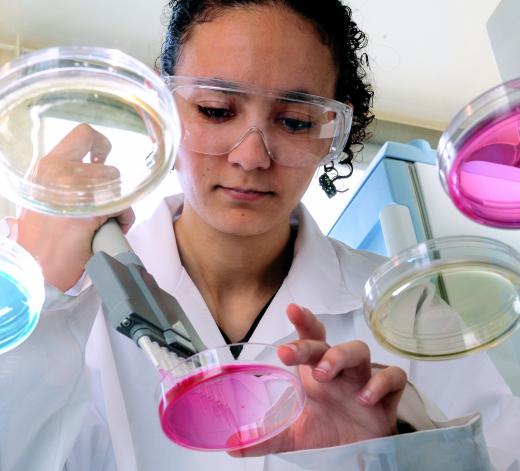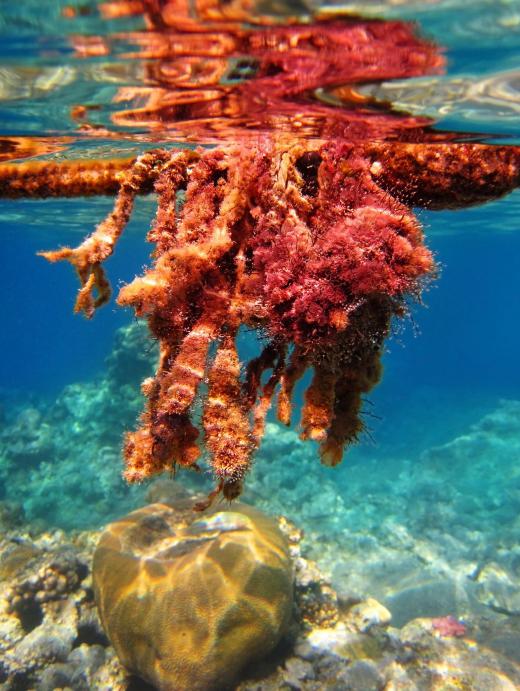What is a Petri Dish?
 Mary McMahon
Mary McMahon
A petri dish is a type of glass or plastic shallow round dish with a close fitting lid which is a vital tool in scientific laboratories. The uses for this piece of equipment are varied, but it is most well known for holding a culture medium upon which cells, bacteria, and viruses can be grown and studied. Most major scientific breakthroughs have been greatly assisted by the use of petri dishes whether they involve the structure of a virus or the ability to clone meat.
The invention is named for Julius Richard Petri, who conceived of the idea in 1877, frustrated with existing tools for cultures. Most scientists used shallow bowls or bottles, which were awkward to work with and subject to contamination. Petri thought that a shallow circular dish would be easier to work with, and easy to make a lid for. The lid keeps the petri dish from being contaminated, and the basic shape makes them easy to stack and arrange in varied configurations.

When a petri dish is used to culture cells, it is usually filled with a growth medium made from agar, a gel made with extracts from red algae, and a variety of nutrients. The growth medium has a gelatinous texture which most cultures thrive on, although sometimes the nutrients need to be varied to meet the needs of the organism being cultured. To satisfy the needs of finicky organisms, a scientist may take several weeks to adjust the environment of a series of dishes. Once the culture starts to thrive, the organism can be researched.

There are other uses for the petri dish: many schools, for example, use them to teach students about seed germination, as the clear dish allows the observer to see every step of growth. In addition, this dish dish is commonly used for dissection, because it is ideally sized to be placed under a microscope. It can also be used for basic experimental purposes like transporting liquids in sterile containers or drying fluids for study.

Other uses for the petri dish are constantly being explored by the scientific community, and it is a laboratory tool that is unlikely to be abandoned in the near future. Major advancements in science such as growing cells integrated with electronic circuits, cloning organs, and understanding viruses have been accomplished with the aid of the humble petri dish. Although other methods of studying organisms in the laboratory are being developed, the need for the basic ability to culture organisms rapidly in a sterile environment will never fade.
AS FEATURED ON:
AS FEATURED ON:















Discussion Comments
I have to do a science experiment for my 8th grade advanced science class and one of the materials was three petri dishes and I had no idea what that was and this website helped so much. I had to do a research paper too, and this helped me get to 1,000 words so thanks so much and keep up the awesome work!
In one of my college science classes we used Petri dishes to look at the various germs and bacteria growing on objects in the classroom. First, we took a swab of various materials (chairs, keyboards, flooring, purses, etc.) in the classroom. After recording our hypotheses and taking record of what was sampled, we placed the Petri dishes in an oven. Two days later, after they had been pulled from the oven, we observed the findings. The most bacteria-infested surface was the keyboard, while the most sterile surface was the classroom sink.
One really great thing about a Petri dish is that you can observe and evaluate every single step of the growth of seeds. They are also great for dissections. In my college biology class, we used Petri dishes to dissect earthworms. We also did a study on Drosophila (fruit fly). The Petri dish is perfect for that.
Post your comments